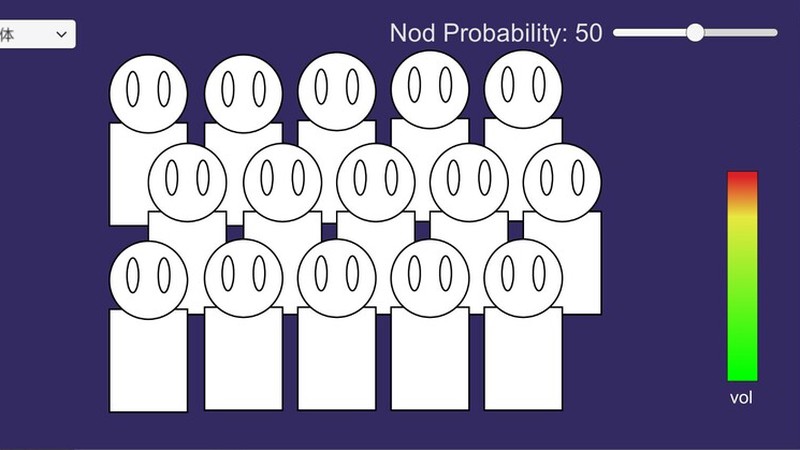Our laboratory has been developing a system that creates a virtual audience of multiple CG characters in VR space for presentation practice and speech training. The system uses a speech-driven nodding generation model to make the virtual audience nod in response to the user’s speech. These systems automatically generate nods in sync with the rhythm of the speech, but require adjustments to achieve a natural nodding frequency.
We noticed that when the nodding frequency adjusted for a single virtual audience member is directly applied to multiple virtual audience members, the nodding appears excessive. Therefore, in this study, we conducted an investigation to determine the appropriate nodding frequency for different numbers of virtual audience members.
In the investigation, nine university students and graduate students observed a virtual audience nodding in response to recorded lecture audio and their own speech. For each number of displayed characters (15, 5, or 1), participants adjusted the nodding probability to achieve an impression similar to “a typical lecture.” The results showed that the appropriate nodding probability increased as the number of displayed characters decreased (15 characters: 40%, 5 characters: 50%, 1 character: 60%). This indicates that for the virtual audience’s nodding to create a natural impression, the nodding frequency needs to be reduced as the audience size increases.

